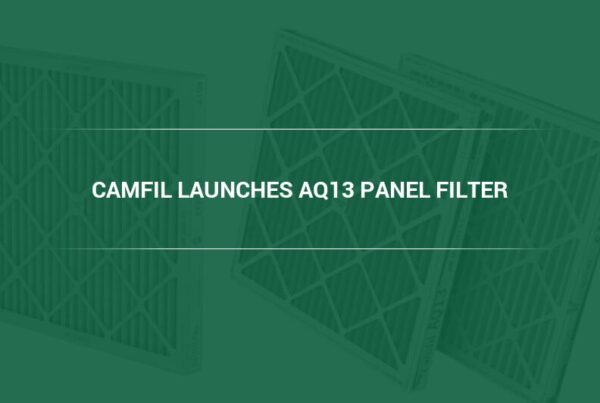A recent study published in the peer-reviewed journal Science of the Total Environment has found that particulate matter pollution from wildfire smoke is linked to an annual 4,000 to 9,000 premature deaths and an economic cost of between $36 and $82 billion in the United States.
Researchers from the University of Houston, Cornell University, and Nanjing University of Information Science and Technology in China sought to examine the specific impact of wildfire smoke pollution on several cities in the United States. To do so, they used satellite data from 2012 to 2014 to track the effects of wildfire emissions on air quality to create a model capable of assessing how particle pollution (PM2.5) could impact human health as well as the economy.
According to the model:
- Los Angeles, which is downwind from west coast wildfires, had 119 premature deaths annually and a $1.07 billion financial burden as a result of wildfire pollution
- Atlanta, which is downwind from fires in the Southern United States, had 76 premature deaths and a $690 million financial burden as a result of wildfire pollution
- Houston had $65 premature deaths and a $580 million financial burden as a result of wildfire pollution
Researchers noted that, in the long term, the following states are likely to experience the greatest economic losses and the highest number of premature deaths due to the volume of pollutants carried their way:
- California
- Florida
- Texas
- Georgia
- Alabama
- North Carolina
What Is Particulate Matter?
Particulate matter is defined as any solid or liquid particle small enough to remain suspended in the air and is categorized by its size. PM2.5, the particle pollution assessed in the study, consists of particles with a diameter of 2.5 microns (micrometers, or one-millionth of a meter). Pollutants such as soot and black carbon are common results of the combustion of wood and other organic matter.
What Kinds of Pollution Come from Wildfire Smoke?
Importantly, particulate matter is not the only type of pollution that comes from wildfire smoke. In addition to particulate matter, the complete and incomplete combustion processes that occur during wildfires produce gaseous or molecular pollutants.
Molecular pollution is another broad category of pollutants that encompasses many different chemicals. The specific gaseous pollutants in wildfire smoke will depend on what was burned, but some commonly found wildfire smoke pollutants include:
- ozone
- sulfur dioxide
- nitrogen oxides
- carbon monoxide
- carbon dioxide
- volatile organics compounds (VOCs)
- water vapor
Gaseous pollutants can also cause significant health side effects and worsen the effects of particulate matter, leading to increased hospital admissions, long-term side effects, and potential premature deaths.
How to Stay Safe When Your Area is Affected by Wildfire Smoke
During wildfire season, it’s crucial to consider the impacts of wildfire smoke and prepare accordingly for air quality advisories & poor conditions, even if you don’t live in an area directly affected by the burning itself.
- Keep an eye on air quality in your area. The Air Quality Index, which is the EPA’s system for rating air quality using data from monitors across the United States, can tell you the specifics of your area’s air quality and what it means for your health.
- Limit outdoor time as much as possible when there is an air quality advisory for your area, or when haze is visible. Remember, dangerous pollutants from wildfire smoke can be carried thousands of miles away from the source of the fire, which means that anywhere can be affected by wildfire pollution.
- Avoid outdoor workouts. Breathing deeply when the air around you is heavily polluted means that you are breathing in a greater volume of pollutants, leading to more severe short- and long-term side effects.
- Keep your doors and windows closed to maintain good air quality indoors as much as possible.
- Visit buildings with a controlled, well-filtered air supply. Indoor air quality can be up to fifty times worse than the ambient air quality in the surrounding area because of outdated building design, poor air circulation, and inadequate air filtration. Although ventilation is important to avoid a buildup of pollutants in stagnant air, the air supply should also be filtered when outdoor pollution is heavy.
- Maintain adequate filtration in your house. With increased levels of wildfire smoke, most HVAC systems are not equipped to handle the pollution. Thus, apart from improving indoor air quality, it’s essential to replace HVAC air filters frequently during wildfire season to protect equipment from damage.
- Supplement your air filters with an air purifier. Residential HVAC systems have limited filter capacity, making air purifiers a valuable supplement. Camfil’s City M uses HEPA and activated carbon filtration to help eliminate both particulate matter and gaseous pollutants and improve air quality for a cleaner and safer indoor environment.
Read more: Strategies to Prepare for Wildfire Smoke Pollution, According to Air Quality Company Camfil
About Camfil Clean Air Solutions
For more than half a century, Camfil has been helping people breathe cleaner air. As a leading manufacturer of premium clean air solutions, we provide commercial and industrial systems for air filtration and air pollution control that improve worker and equipment productivity, minimize energy use, and benefit human health and the environment. We firmly believe that the best solutions for our customers are the best solutions for our planet, too. That’s why every step of the way – from design to delivery and across the product life cycle – we consider the impact of what we do on people and on the world around us. Through a fresh approach to problem-solving, innovative design, precise process control, and a strong customer focus we aim to conserve more, use less and find better ways – so we can all breathe easier.
The Camfil Group is headquartered in Stockholm, Sweden, and has 30 manufacturing sites, six R&D centers, local sales offices in 35+ countries, and about 5,600 employees and growing. We proudly serve and support customers in a wide variety of industries and in communities across the world. To discover how Camfil USA can help you to protect people, processes and the environment, visit us at www.camfil.us/
##
Media Contact:
Lynne Laake
Camfil USA Air Filters
T: 888.599.6620
E: Lynne.Laake@camfil.com
F: Friend Camfil USA on Facebook
T: Follow Camfil USA on Twitter
Y: Watch Camfil Videos on YouTube
L: Follow our LinkedIn Page
Sources:
https://www.sciencedirect.com/science/article/abs/pii/S0048969723012305



